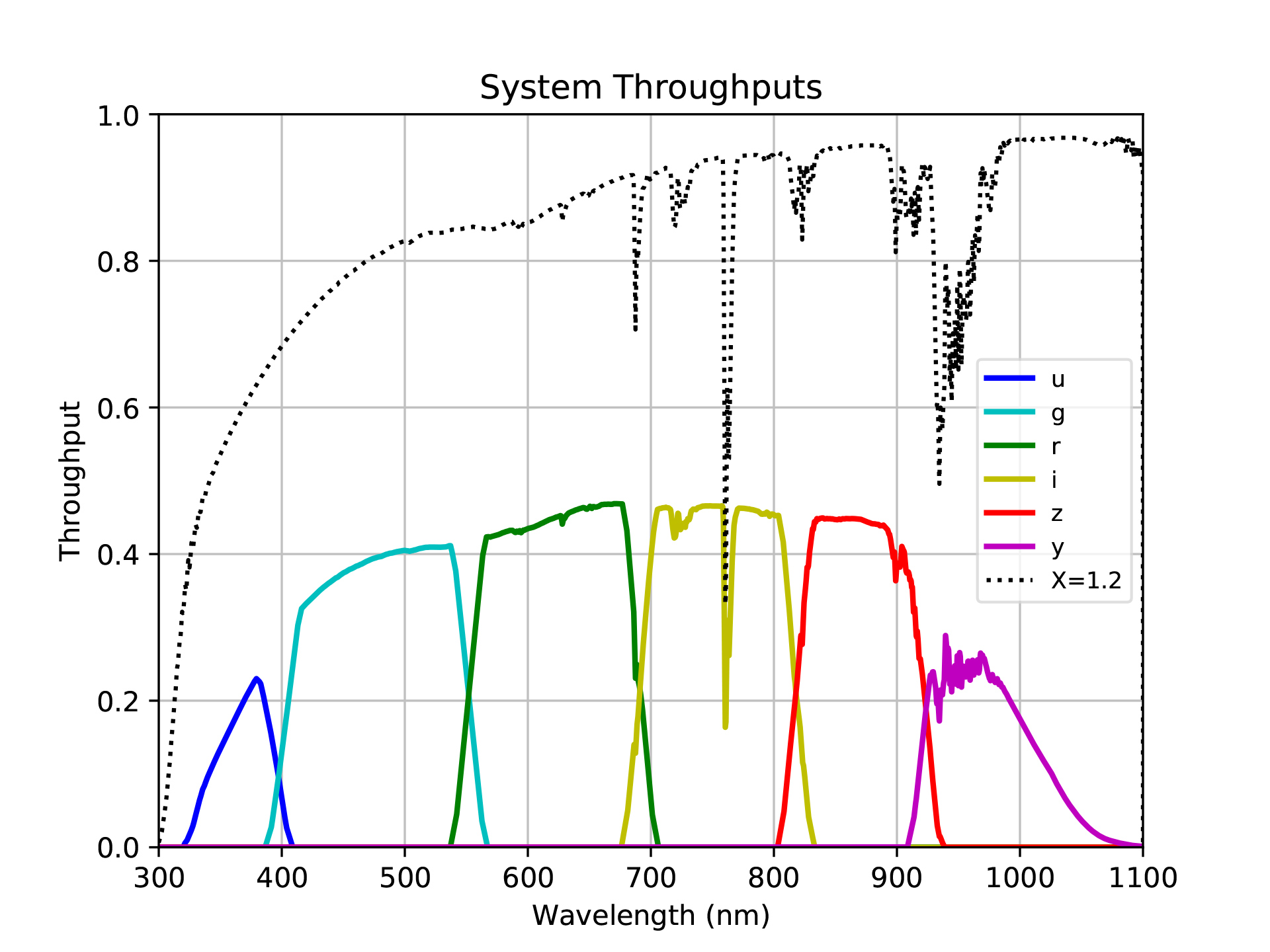Telescope System:
- Etendue ( AΩ ) : 319 meter2degrees2
- Field of View : 3.5 degrees (9.6 square degrees)
- Primary mirror diameter : 8.4 m
- Mean effective aperture : 6.423 m (area weighted over FOV)
- Final f-ratio : f/1.234
- Camera weight : 6,746 lbs (3,060 kg)
- Mirror (M1+M3 glass mirror only) weight : 35,900 pounds (16,284 kg)
Imaging System:
- Pixel count : 3.2 Gpixels
- Focal plane : 189 4kx4k science CCD chips
- Pixel pitch : 0.2 arcsec/pixel
- Pixel size : 10 microns
- Filling factor : >90%
- Minimum exposure time : 1 sec
Throughput:
- 5-sigma point source depth (AB mag): single exposure and coadded images idealized for stationary sources after 10 years,
- u : 23.8, 25.6
- g : 24.5, 26.9
- r : 24.03, 26.9
- i : 23.41 , 26.4
- z : 22.74, 25.6
- y : 22.96, 24.8
See also the tech note on Calculating Rubin Observatory limiting magnitudes and SNR, and for more recent estimates from operations simulations, Table 2 of Bianco et al. (2022).
The Rubin Observatory bandpasses. The vertical axis shows the total throughput. The computation includes the atmospheric transmission (assuming an airmass of 1.2, dotted line), optics, and the detector sensitivity. For more details, please see the LSST overview paper.


